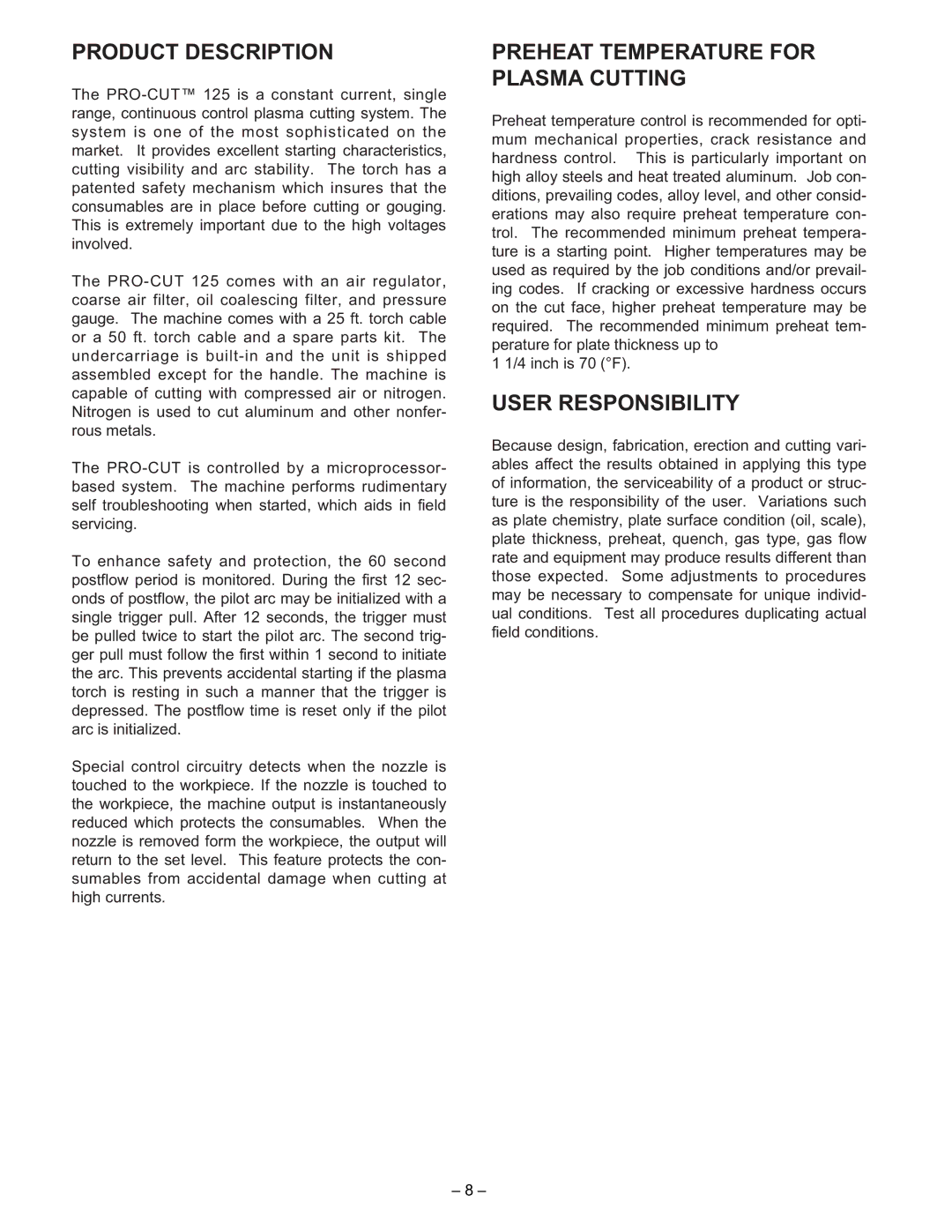PRODUCT DESCRIPTION
The
The
The
To enhance safety and protection, the 60 second postflow period is monitored. During the first 12 sec- onds of postflow, the pilot arc may be initialized with a single trigger pull. After 12 seconds, the trigger must be pulled twice to start the pilot arc. The second trig- ger pull must follow the first within 1 second to initiate the arc. This prevents accidental starting if the plasma torch is resting in such a manner that the trigger is depressed. The postflow time is reset only if the pilot arc is initialized.
Special control circuitry detects when the nozzle is touched to the workpiece. If the nozzle is touched to the workpiece, the machine output is instantaneously reduced which protects the consumables. When the nozzle is removed form the workpiece, the output will return to the set level. This feature protects the con- sumables from accidental damage when cutting at high currents.
PREHEAT TEMPERATURE FOR PLASMA CUTTING
Preheat temperature control is recommended for opti- mum mechanical properties, crack resistance and hardness control. This is particularly important on high alloy steels and heat treated aluminum. Job con- ditions, prevailing codes, alloy level, and other consid- erations may also require preheat temperature con- trol. The recommended minimum preheat tempera- ture is a starting point. Higher temperatures may be used as required by the job conditions and/or prevail- ing codes. If cracking or excessive hardness occurs on the cut face, higher preheat temperature may be required. The recommended minimum preheat tem- perature for plate thickness up to
1 1/4 inch is 70 (°F).
USER RESPONSIBILITY
Because design, fabrication, erection and cutting vari- ables affect the results obtained in applying this type of information, the serviceability of a product or struc- ture is the responsibility of the user. Variations such as plate chemistry, plate surface condition (oil, scale), plate thickness, preheat, quench, gas type, gas flow rate and equipment may produce results different than those expected. Some adjustments to procedures may be necessary to compensate for unique individ- ual conditions. Test all procedures duplicating actual field conditions.
– 8 –
